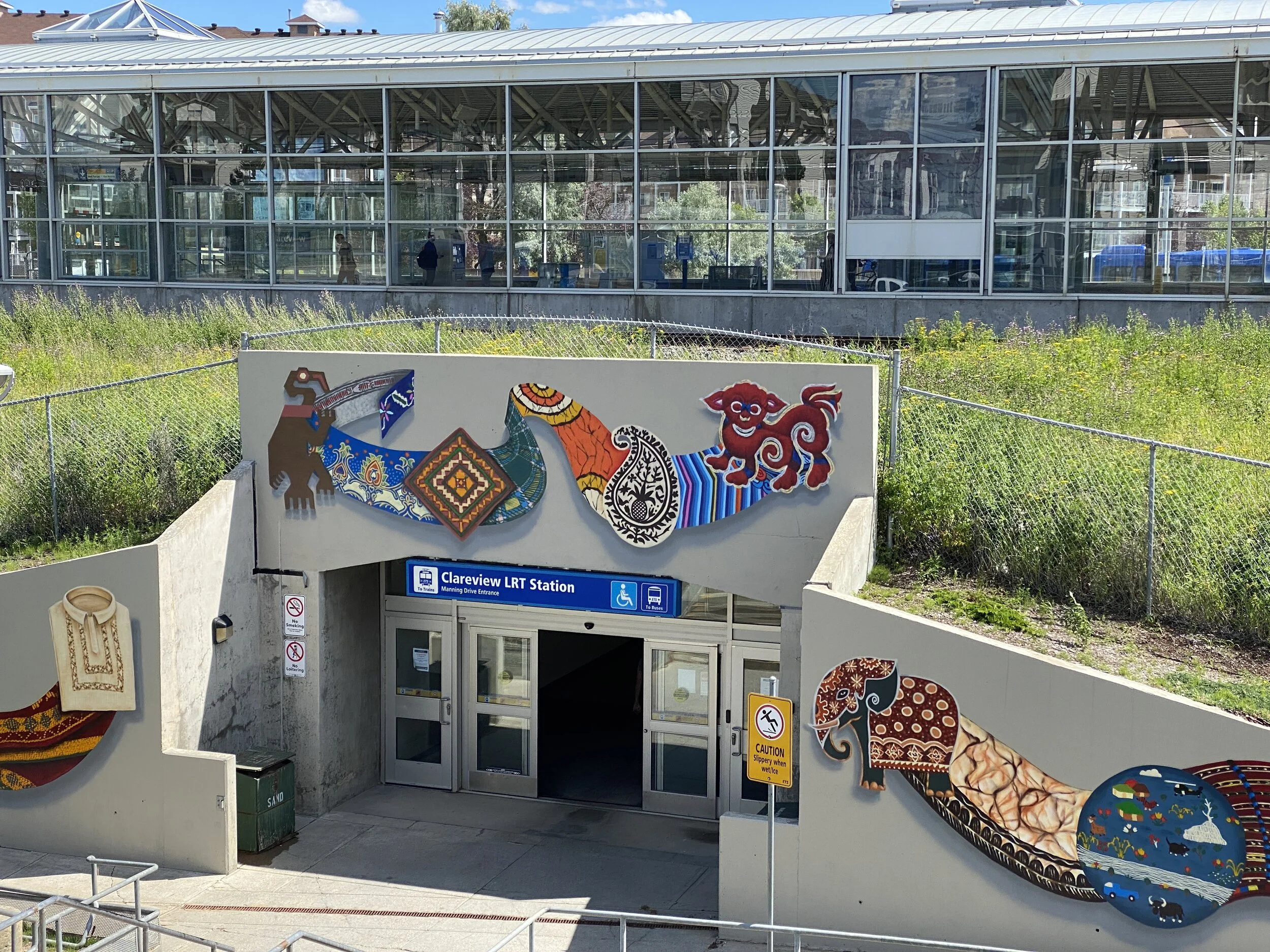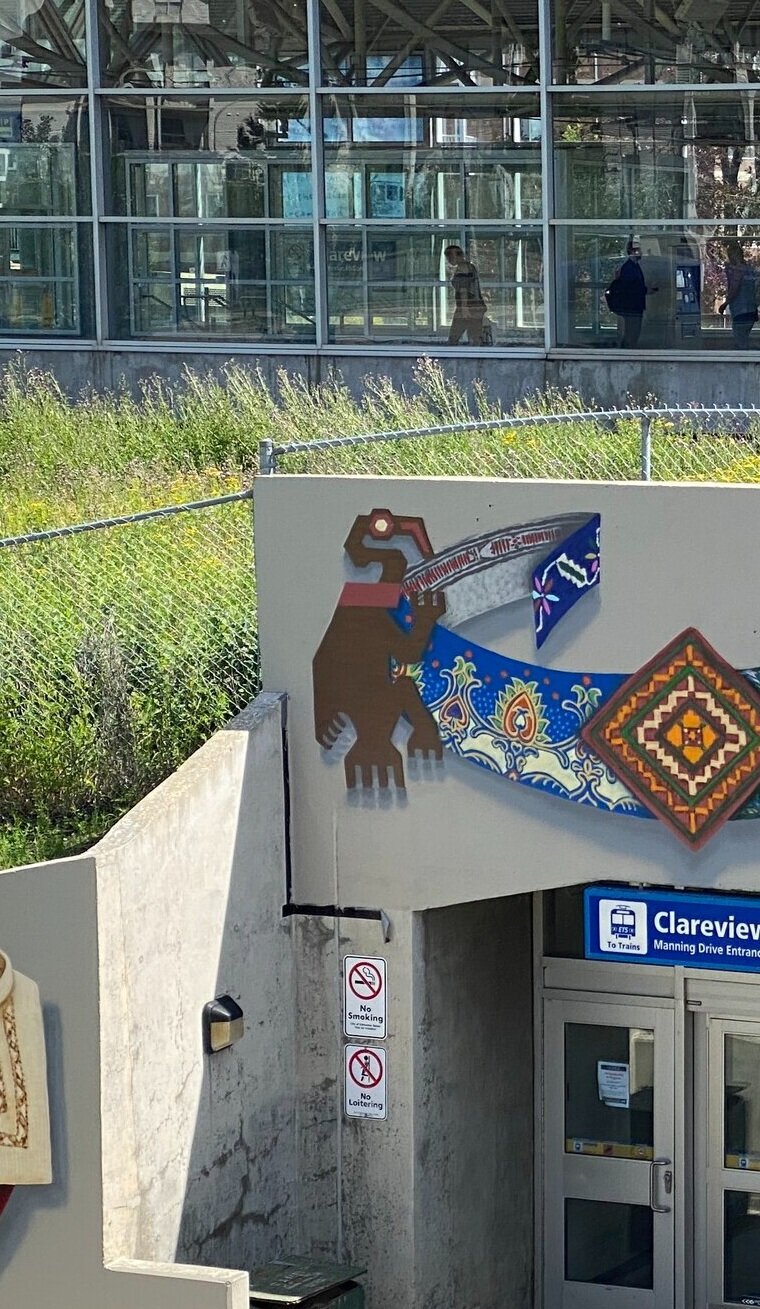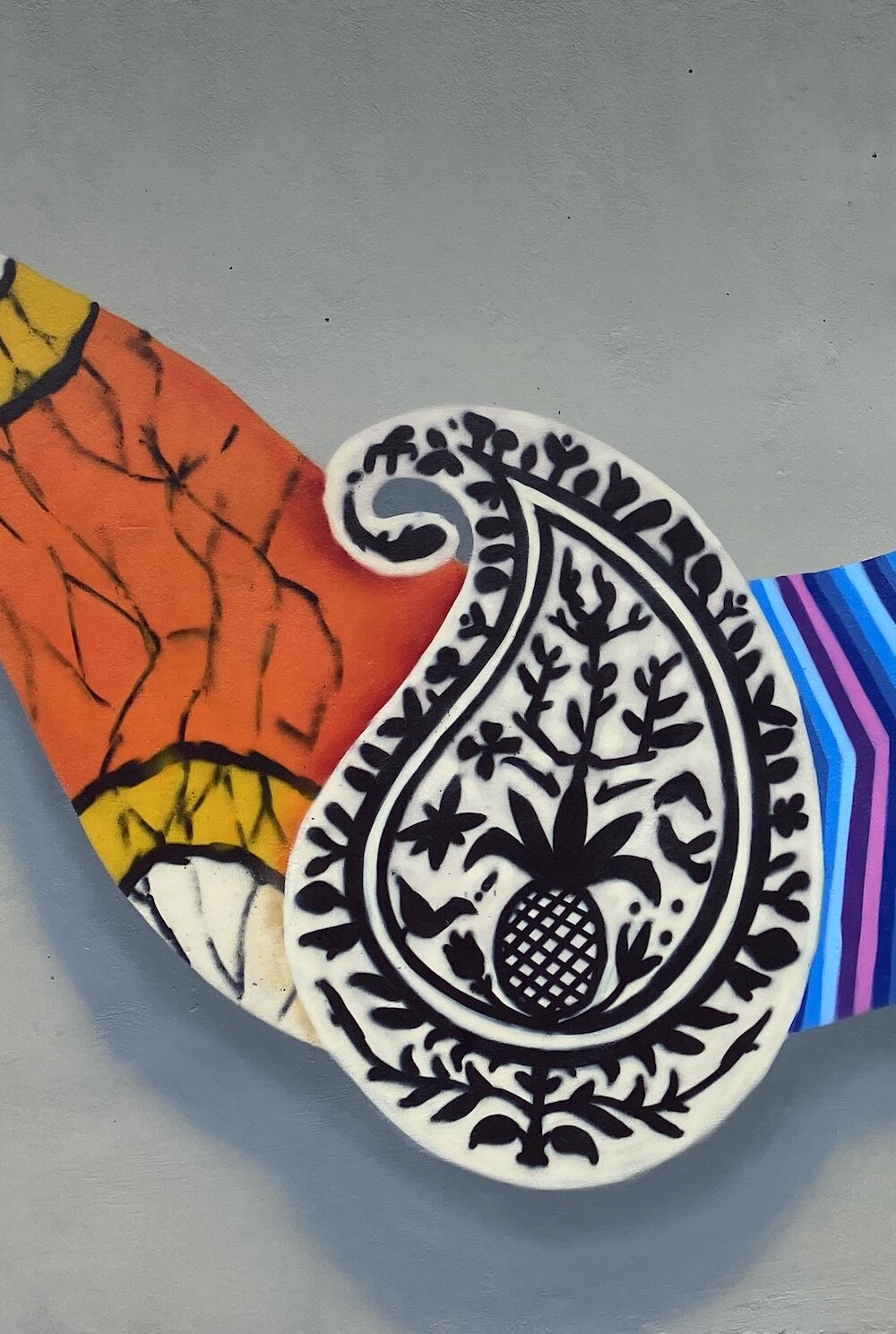Interpretive Panel / Artist Statement: Fabric of the City
For this fifth and final Paint the Rails mural, we joined together with Edmonton’s Chinese, Sri Lankan, Latin American and Filipino communities to learn about the local moments that matter to each identity, and how they all have shaped the history and culture of our city.
This mural features culturally important textiles: fabrics, clothing, blankets and woven items were shared with us that hold meaning and stories from each cultural community’s diverse traditions. These photos and descriptions became the basis for this mural.
While each of these communities are vibrant and varied, there remain key themes in common among all, revealing an interconnected and dynamic history of hope and belonging that helps tell us about Edmonton as a city. Community Partners shared diaspora experiences of second, third, fourth generation roots; recounting the importance of restoring connections with ancestral knowledge and reclaiming cultural traditions. Many recounted tales and trials of the refugee and newcomer experience; revealing journeys of perseverance, courage and resilience. The Chinese community has deep roots in Edmonton well over 100 years old - the stories shared touched on the power of reconnecting generations, and strength through collaboration. The communities we spoke to shared the generational impacts of their migration stories, sharing themes of connecting to heritage while finding home in a new land.
The textiles chosen tell stories in a variety of ways - some, like the Hmong Story Cloth and the Chilean Arpillera, paint a literal scene through which histories can be recorded and passed down. Others, like the Filipino Barong and Sablay shared by Ryan and Kehrl, speak to important life events and celebrations. Symbols like the Chinese Phoenix, inspired directly by the brocade of community member Kathryn’s qun kwa (traditional wedding dress), or the Sri Lankan Elephant baatik shared by Chitra, are rich with meaning. Community organizations, like Migrante, taught us about the sense of identity that a garment such as the poncho of the Mapuche people represents. The way each textile is designed and produced, the lifestyles or moments it is intended for, and how it has been altered and adapted between generations speak volumes. Similarly, the cultural fabric of this city is woven and worn by many.
















